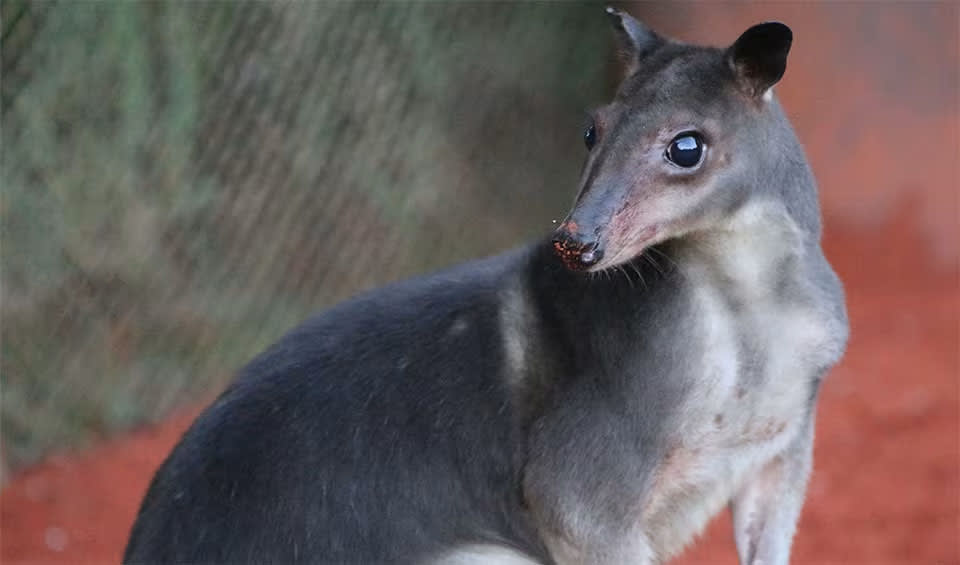Dorcopsis – New Guinean forest wallabies
Foot stomping is not a sign of a tantrum throw; instead, it's to warn others of nearby danger
Consists of four distinct species that inhabit the dense rainforests of New Guinea. These marsupials are fascinating examples of adaptation and specialization within their unique ecological niche. The distinct fur coloration and physical adaptations of Dorcopsis species contribute to their survival and distinguish them within the diverse family of wallabies and kangaroos.
One of the most notable features of Dorcopsis wallabies is their fur coloration, which varies among species but typically involves a contrast between the darker dorsal (back) surface and the paler limbs. Such coloration likely plays a role in camouflage, helping these animals blend into the forest floor’s dappled light and dense vegetation. Additionally, the tail of Dorcopsis species is particularly interesting; while it is mostly furry, the tip is hairless. When these wallabies adopt a squatting posture, only the hairless tip of their tail touches the ground, forming an arch. This unique posture and tail use may assist in balance and stability as they navigate their forest environment or may play a role in social or mating behaviors.
The reproductive strategy of Dorcopsis wallabies is especially intriguing and speaks to their evolutionary adaptation for survival in challenging environments. They exhibit a short gestation period, which allows for rapid reproduction and increases the chances of offspring survival. The ability of mothers to care for two joeys of different ages simultaneously is an extraordinary aspect of their biology. Dorcopsis wallabies possess separate teats for producing two types of milk, each tailored to the nutritional requirements of the younger and older joey. This dual lactation strategy is a remarkable adaptation that enables Dorcopsis mothers to efficiently provide for their offspring’s varying developmental needs, ensuring both have the best chance at reaching maturity.
Species in this genus
White-striped dorcopsis
Common in the tropical forests of northern Indonesia and Papua New Guinea


